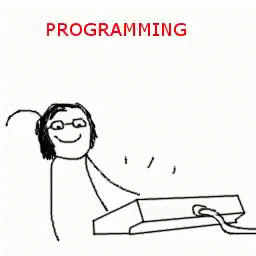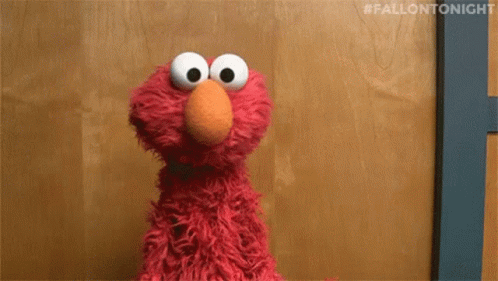I'm on YouTube (for) now
10 minutes read
14th August 2022
A few months ago, Grant Sanderson1 has called for a friendly competition to create some sort of maths explanation content2 in the form of a video, blog post, video game, comic etc. He named it the Summer of Math Exposition and I participated. Before we continue, please watch my entry:
The competition
The competition is actually called Summer of Math Exposition 2 since Grant did the same thing last year already. It was a great success, as far as I can gauge, with 1300 submissions. I wanted to participate and make a video about Catmull-Rom splines3, but I wasn’t able to finish, since I overscoped.4 These Catmull-Rom splines were a central part of my Ph.D. thesis, and I thought it might be a nice idea to talk about them. Especially, since Bézier splines are so ubiquitous. But I didn’t have a clear plan of what to tell about them and time ran out.
But this year I managed to finish my entry. The deadline is the 15th of August 20225 and I finished my video about a week before that. Over the following few weeks there will be a peer-review process which aims to rank the submissions properly. AFAIK, it will work the same way as last year: People who do the review get a personalized link to a website which gives them two submissions, and they have to decide which they like better. The results will then be processed into a total ranking.6 Afterwards, Grant will look at the top 100 to choose the winners.
At the start, he announced that his 5 favourites will win $1000 each as well as a golden \(\pi\)-plushie. James Schloss, his co-organizer, said they secured more funding so more people might get prices, but I don’t know the details.
In any way, the chances of me winning are slim, though. This year, the organizers except around 600 submissions. Not that my video isn’t good enough (in theory). But there are so many fantastic entries that even getting in the top 100 with a good video is hard. The real reward, of course, is that people who always wanted to create some sort of public maths explanations get motivated and driven enough to actually do so.

Why and how I created my video
Before I start talking about my video itself: Further up I said that any form of maths explanation is eligible, but then I mostly talk about videos. As Grant Sanderson is mostly known through his YouTube channel, and he announced the competition there, it’s natural that most submission would be videos. Anyone who knows me and my work might wonder why I didn’t write a blog post with lost of CindyJS7 applets in it. But anyone who ever read any of my blog posts knows why that’s a bad idea. Moreover, it was pretty clear early on that I will do something about the Tic-Tac-Toe grid, and I couldn’t imagine good interactive applets about it the right way. For a more traditional or general introduction to Projective Geometry, there are good options for interactive diagrams etc. But for the very concrete constructions I presented, I thought that fixed animation in a video might be better.
On to the video: I’ve been working as a teaching assistant for over a decade now, and usually, I worked together with Jürgen Richter-Gebert on his various geometry lectures. One of it is called Geometriekalküle which translates as Geometric Calculus.8 In it, we always give the same task in the exercise sheets that the video starts with: Given the perspective drawing of the outside of a Tic-Tac-Toe grid, find solutions to fill in the rest.
When I encountered this exercise myself, back when I was a student, I hated it, but now it’s one of my favourites. It’s not supposed to be a dunk on the TA who wrote the solutions back then, but when I wrote my own set of possible answers, I understood it much better. But that’s just how learning work, isn’t it?
![Gif if Ralph Wiggum telling Lisa Simpson that he's learnding [sic].](https://c.tenor.com/ixtUKavels0AAAAC/learning-learnding.gif)
A few months ago, I was the curator for the German Real Scientists account on Twitter.9Every week, a different scientist is responsible for the account and can tweet more or less whatever they want about their work to 18000 followers. I mostly presented the things I worked on during my Ph.D. and my current Post-Doc project. But I also wanted to tell a bit about the things I teach at uni; and I chose the Tic-Tac-Toe exercise. Unfortunately, I was too ambitious with the things I wanted to post and wasn’t able to present many solutions to the Tic-Tac-Toe problem in an interesting way.
But ever since that, it stuck with me and I wanted to give a comprehensive explanation for a broader audience outside the university. I was contemplating starting a YouTube channel for a while anyway and when Grant announced SoME2, everything came together as a neat idea.
The solution to the exercise sheet we provide contains five or six different ways to solve this particular problem. But I thought that three or four might be enough for a video. In particular, I wanted to skip anything that uses homogeneous coordinates10 and stay completely in the realm of constructions with a straightedge. I hoped that this might be nicer in a visual medium like a video. Moreover, my first draft of the script was around 4000 words and many online converters I found online told me that this might be a 30 minutes video. I didn’t want to go longer anyway.11

Script writing went fine, overall, I guess. The bulk of the work were the animations, though. Unsurprisingly, I used CindyJS7 for them. Over a year ago, I started to work on a big code library for it. This library consists mostly of the code I copy-pasted from one project to the next. I also wanted to imitate some animation functionality Grant Sanderson uses for his videos.12
When I started, I had some structure in mind how it should work. And while I was developing most of it, it went fine. But then I made a break and came back, I could barely remember how to use it as it was too convoluted. So, I threw most of it out. Currently, it mostly uses a form of smart time-tracking objects and the rest is \(\mathrm{lerp}\). This function interpolates between two values based on a third one, which gives the progress:
\[\mathrm{lerp}(x,y,t) := t \cdot y + (1 - t)\cdot x\]About 95% of anything you see on a computer screen – any letter, everything in a video game or animated movie – is made with this function.13 And I used it to interpolate line segments from start to end, transform grids from one position to another or let text appear in a typewriter-like style. Lots of copy-pasting involved, though, as I got rid of most of the functionality, as mentioned above. But! Now I have a much better understanding of what parts of the process of creating animations I actually want to capsule away and automate. Might take another video or two to fully convince myself. Nonetheless, this experience was already incredibly helpful for my CindyJS work.

Overall, it took me about
- six weeks for writing the script,
- two weeks for the animations,
- one day for recording the voice-over and
- two days for editing.
Since my work at uni is highly irregular anyway, I spent one or two workdays on the video. But most of it was done at night and on the weekends. Not too bad overall. And with a bit more experience, things hopefully will get faster. Speaking of things that will get done…
The future
I want to continue with YouTube.
I’m overthinking everything, and with this, I’m in a deep rabbit hole right now. I already have ten ideas for future videos14 and some of them might even be good. In the end, though, this YouTube thing will probably be just a small side project. Regardless of how it turns out, the experience alone will surely help improve my skill set: Since I’m teaching and giving workshops and presentations, practising how to write scripts, edit videos and create animations (and learning how to do all those things more efficiently) will hopefully pay off.
Moreover, there’s the giant boot named Wissenschaftszeitvertragsgesetz15 that will kick me out of uni soon. So, who knows? Maybe YouTube is my future?

-
A.k.a. 3blue1brown on YouTube. ↰
-
A word I despise in most cases. So, it will be the last time you will read it here. If you want to know why, I recommend the following Idea Channel video my Mike Rugnetta: Link ↰
-
I guess that means, I did participate, but just not submit anything…? ↰
-
Tomorrow, as of writing this blog post. ↰
-
Basically, the ELO-System ↰
-
The official English course listings call it either Introduction to Projective Geometry or Algebraic Structures in Geometry. Both aren’t wrong, but don’t capture the essence. ↰
-
A way to represent 2D points by vectors in 3D. Link to the Wikipedia article ↰
-
Tommy Thompson, a.k.a. AI and Games on YouTube, told me it’s probably closer to 20 minutes. And it turned out, that he was spot on. ↰
-
Which you can find under Manim on GitHub ↰
-
Most likely 99,9% or more. But I’m too lazy to actually think about it. ↰
-
I’m one of those dreaded idea guys, sadly. ↰
-
The most terrible German word which translates to Academic Fixed-Term Contract Act. Short version: If you’re a scientist in Germany and you don’t get tenure as a professor after, you get kicked out after 12 years max, and you’re prohibited from working as a scientist. Forever. ↰